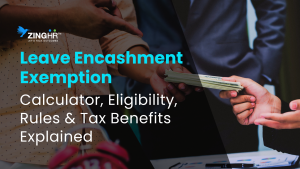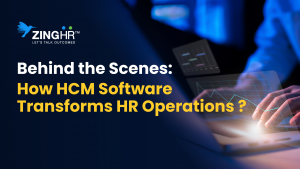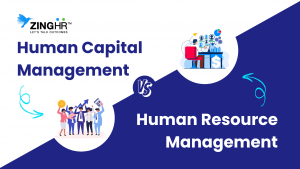
The role of technology in enhancing employee experience is significant. In the post-pandemic era, enterprises are adapting to change and leveraging disruptions. An employee-centric strategy combined with AI-driven solutions drives innovation for future-ready results.
A study by Gallup showed that 85% of employees are not engaged in the workplace. Hence, it is crucial to have robust workforce management strategies and prioritize automation for a fantastic employee experience. By doing so, enterprises can meet the demands of the digital world.
Workforce Management: Celebrating Talent Excellence
The HR department plays a crucial role in the performance of various business functions, from sourcing the right candidates to designing an effective onboarding process and monitoring human capital investments. Workforce management is a process that involves the allocation of human resources for better transparency and business control, leading to a streamlined employee experience.


The 6 Key Stages of Workforce Planning
- Strategic Growth – Aligning organizational objectives with workforce commitments.
- Supply Identification – Evaluating current workforce demands and analyzing changes due to attrition and other factors.
- Demand Projection – Analyzing current and future human capital requirements.
- Gap Identification – Understanding the gap between supply and demand and analyzing its impact.
- Solution Framework – Implementing interventions to bridge the gap between challenges and future aspirations.
- Tracking Progress – Monitoring HR solutions and evaluating their impact for maximum efficiency.
Boosting Workforce Resilience with Technology
Effective workforce management is crucial for boosting an organization’s overall performance, but manual processes or resistance to change can hinder innovation. Working with a tech partner, such as ZingHR, can help enterprises adopt cloud-based HCM technologies and foster a collaborative and purpose-driven workforce. Here is how technology can help increase the effectiveness of workforce management initiatives.


Emphasizes Employee Experience
A successful workforce management strategy requires a focus on the Employee Life Cycle. To maximize performance, business leaders must create strategies that enhance the employee experience from the onboarding stage.
By using AI solutions, workforce management strategies can encourage employee collaboration and digital interaction, leading to improved transparency and performance.
Streamlining Training and Development
Training and development are crucial to keeping employees motivated and improving their skills. However, traditional training methods with a lot of paperwork can demotivate employees.
Technology can help organizations streamline their training efforts. By implementing a digital Learning Management System (LMS), employees can choose courses based on their skills and schedule training sessions. HR analytics can also be used to measure the effectiveness of the LMS and identify areas for improvement.


Recognizing and Supporting Employees
Recognizing the efforts of employees is essential for maintaining workforce morale and engagement, especially in hybrid work environments. When employees feel valued and appreciated, they are more likely to work towards common goals and be more engaged in their work.
ZingHR’s AI-driven Rewards & Recognition (R&R) platform provides real-time updates on employee performance and offers customizable badges to recognize their achievements. This fosters a culture of excellence and helps employees feel fulfilled and motivated.
Higher Employee Engagement
To improve employee experiences, it’s crucial to focus on their engagement levels at work. Monotony in work can lead to a lack of inclusiveness in the work culture. Hence, organizations must embrace technology and become tech-enabled. Digital engagement channels allow employees to share their perspectives and feedback, while HR leaders can increase process efficiency using data analytics.


Omnichannel Performance Management
The goal for an enterprise is to create a platform that measures performance and analyzes core competencies across business units. Traditional performance metrics become tedious and can compromise the employee experience. ZingHR’s performance management system is AI-driven, providing real-time insights and enabling the assignment of key responsibilities, design of future-ready KPIs, and improved accessibility throughout the organization.
Future-Ready Workforce Management
70% of employees believe their sense of purpose is defined by their work, according to McKinsey & Company. Hence, enterprises must strive to create a culture that helps employees find their purpose and work towards it. Additionally, great onboarding leads to 69% of employees being more likely to stay with a company for 3 years, as per Clickboarding. Investing in a streamlined recruitment process is the first step towards a future-proof workforce management strategy.


Celebrating Workforce Management with ZingHR
Integrating future-ready technologies is key to the success of workforce management strategies. ZingHR, a trustworthy and innovative enterprise, empowers SMBs and large businesses to move beyond mediocrity and invest in agile and resilient HCM models.
When you choose ZingHR as your technology partner for your enterprise, you can expect:
- Enterprise-wide transformation
- Employee-focused progress
- Comprehensive employee performance plans
- Unrestricted career growth opportunities
For more on ZingHR solutions, visit www.zinghr.com or click here to book a demo.




